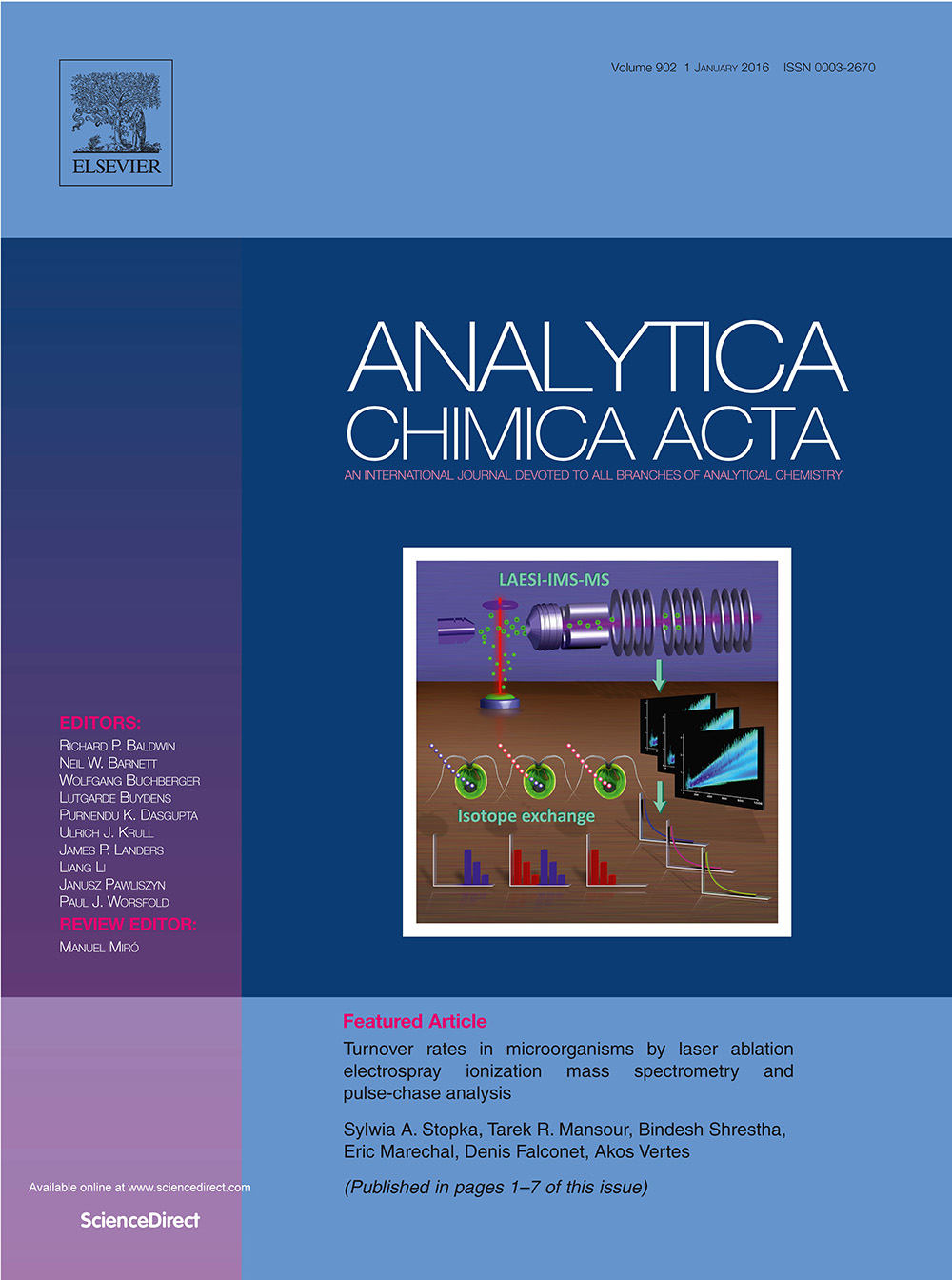Sylwia A. Stopka, Tarek R. Mansour, Bindesh Shrestha, Éric Maréchal, Denis Falconet, Akos Vertes
Analytica Chimica Acta, 2015, September (online)
DOI: 10.1016/j.aca.2015.08.047 | Impact factor (2014): 4.513
DOWNNLOAD | ONLINE
SUMMARY
Biochemical processes rely on elaborate networks containing thousands of compounds participating in thousands of reaction. Rapid turnover of diverse metabolites and lipids in an organism is an essential part of homeostasis. It affects energy production and storage, two important processes utilized in bioengineering. Conventional approaches to simultaneously quantify a large number of turnover rates in biological systems are currently not feasible. Here we show that pulse-chase analysis followed by laser ablation electrospray ionization mass
spectrometry (LAESI-MS) enable the simultaneous and rapid determination of metabolic turnover rates. The incorporation of ion mobility separation (IMS) allowed an additional dimension of analysis, i.e., the detection and identification of isotopologs based on their collision cross sections. We demonstrated these capabilities by determining metabolite, lipid, and peptide turnover in the photosynthetic green algae, Chlamydomonas reinhardtii, in the presence of 15Nlabeled ammonium chloride as the main nitrogen source. Following the reversal of isotope
patterns in the chase phase by LAESI-IMS-MS revealed the turnover rates and half-lives for biochemical species with a wide range of natural concentrations, e.g., chlorophyll metabolites, lipids, and peptides. For example, the half-lives of lyso-DGTS(16:0) and DGTS(18:3/16:0), t1/2 = 43.6±4.5 h and 47.6±2.2 h, respectively, provided insight into lipid synthesis and degradation in this organism. Within the same experiment, half-lives for chlorophyll a, t1/2 = 24.1± 2.2 h, and a 2.8 kDa peptide, t1/2 = 10.4±3.6 h, were also determined.
